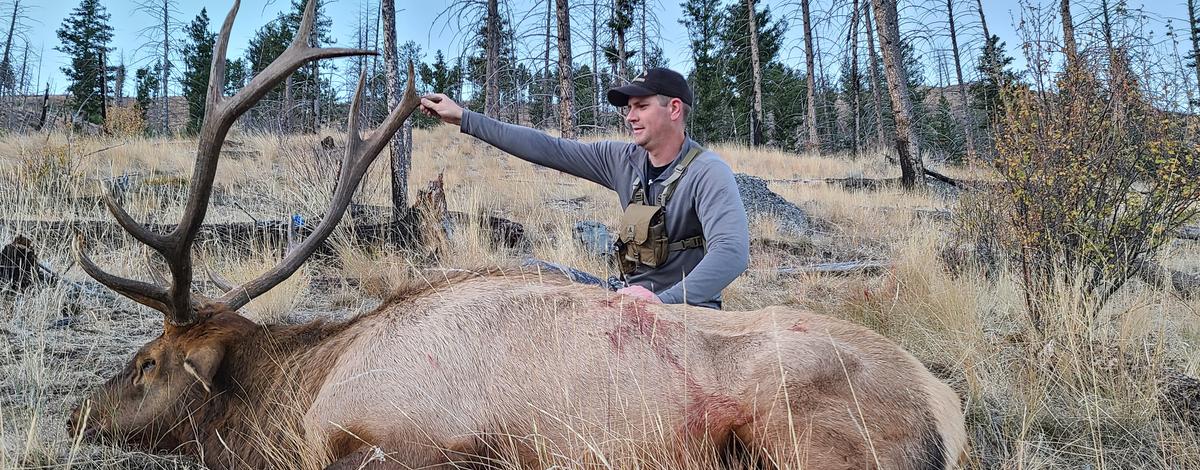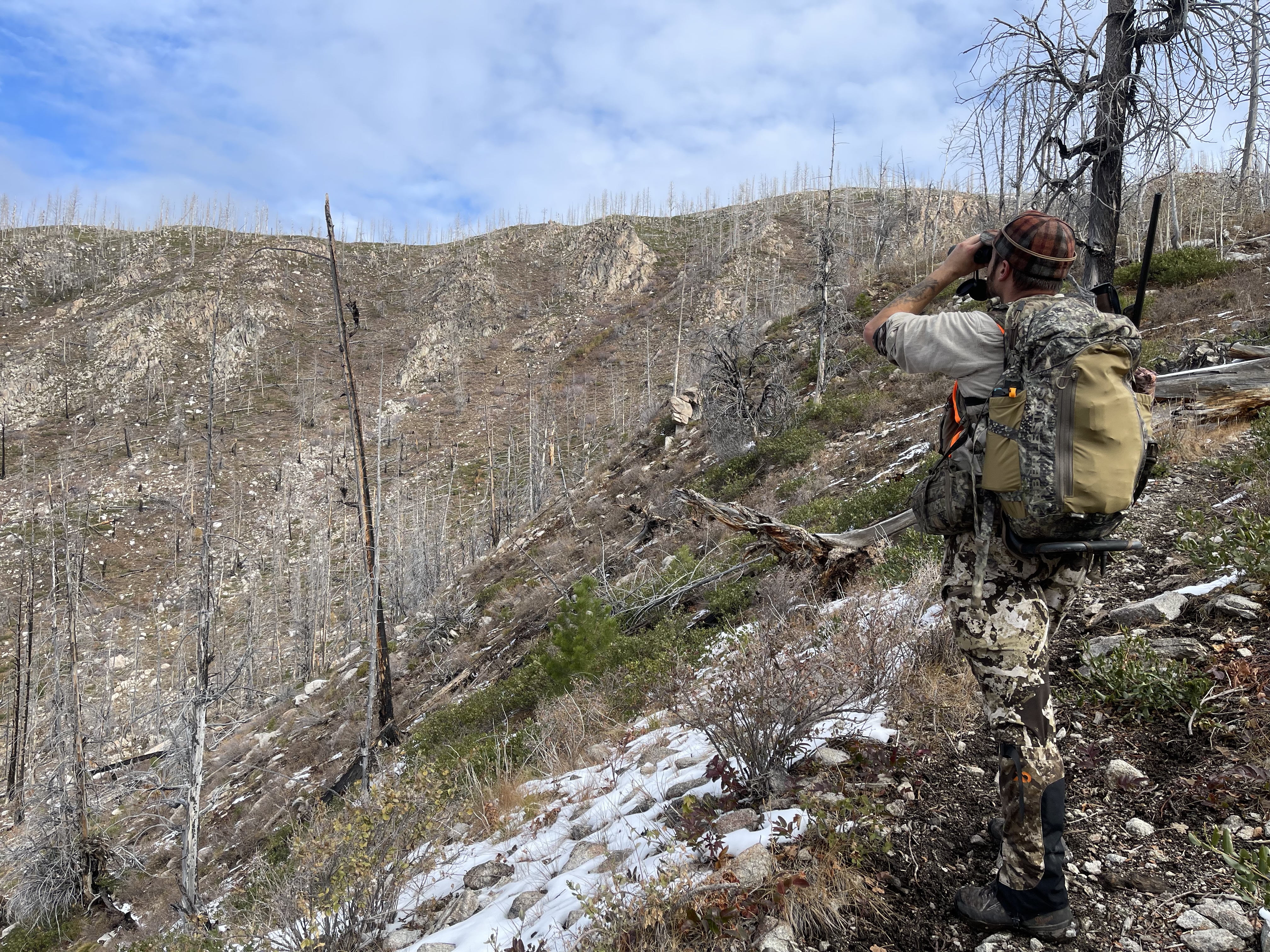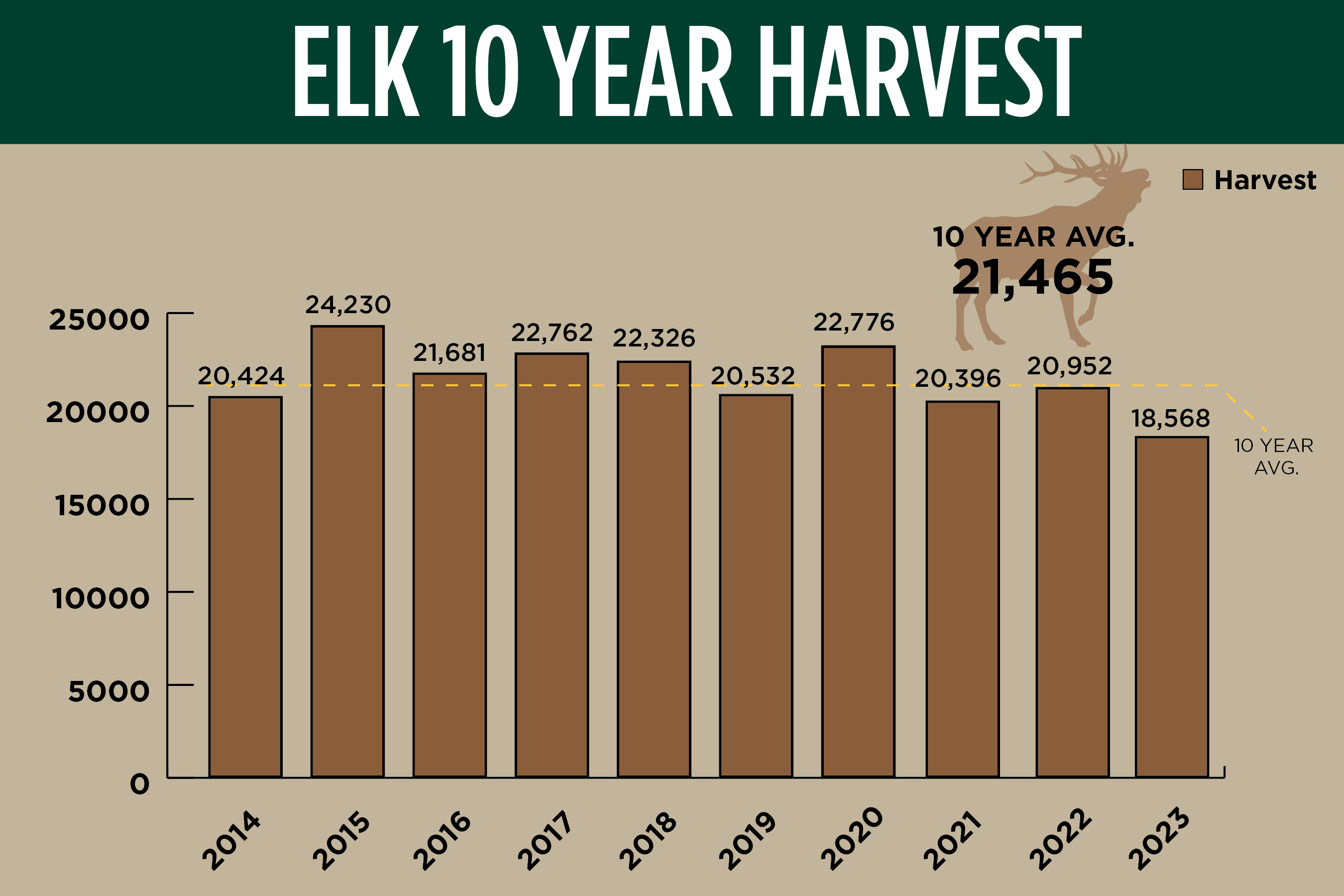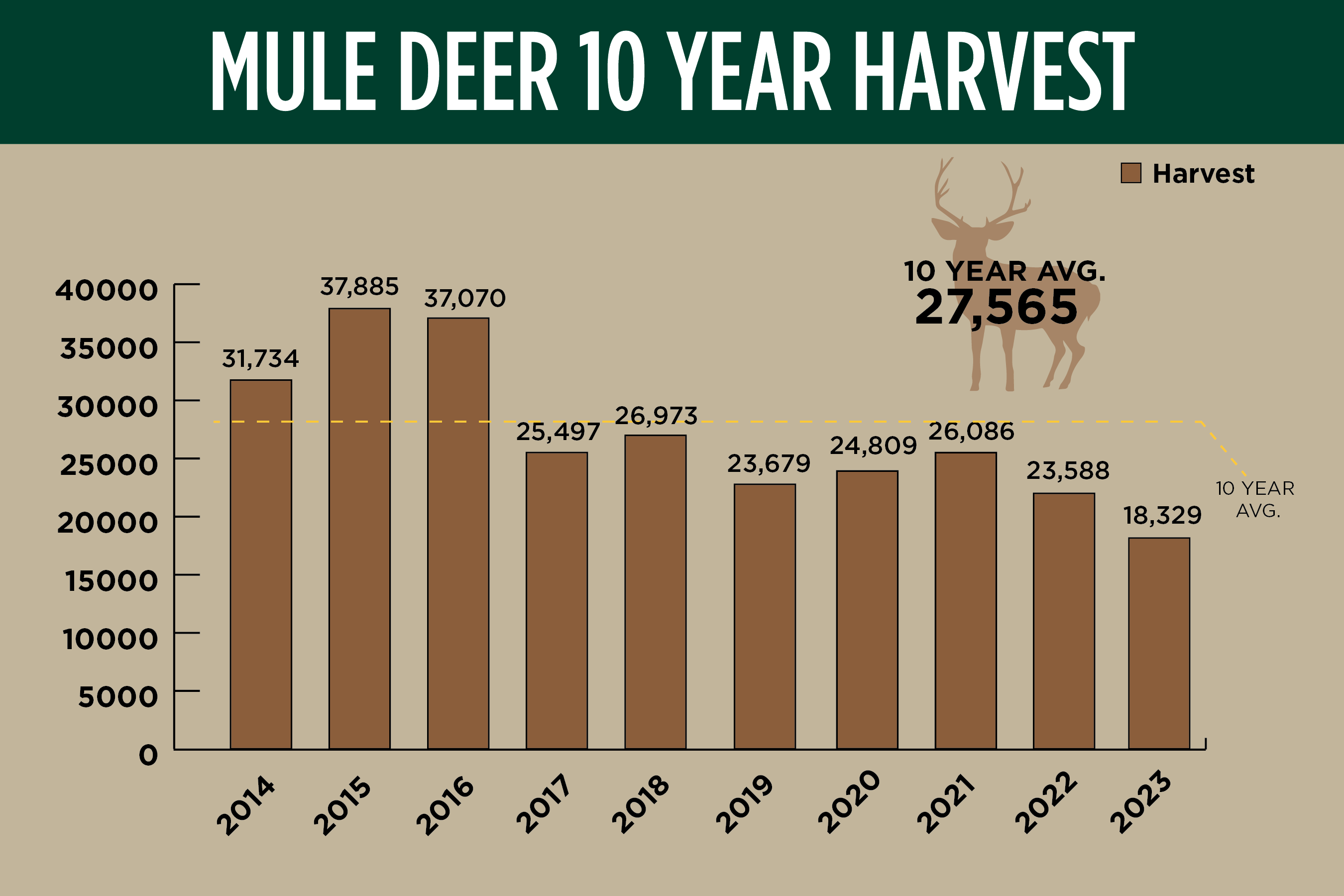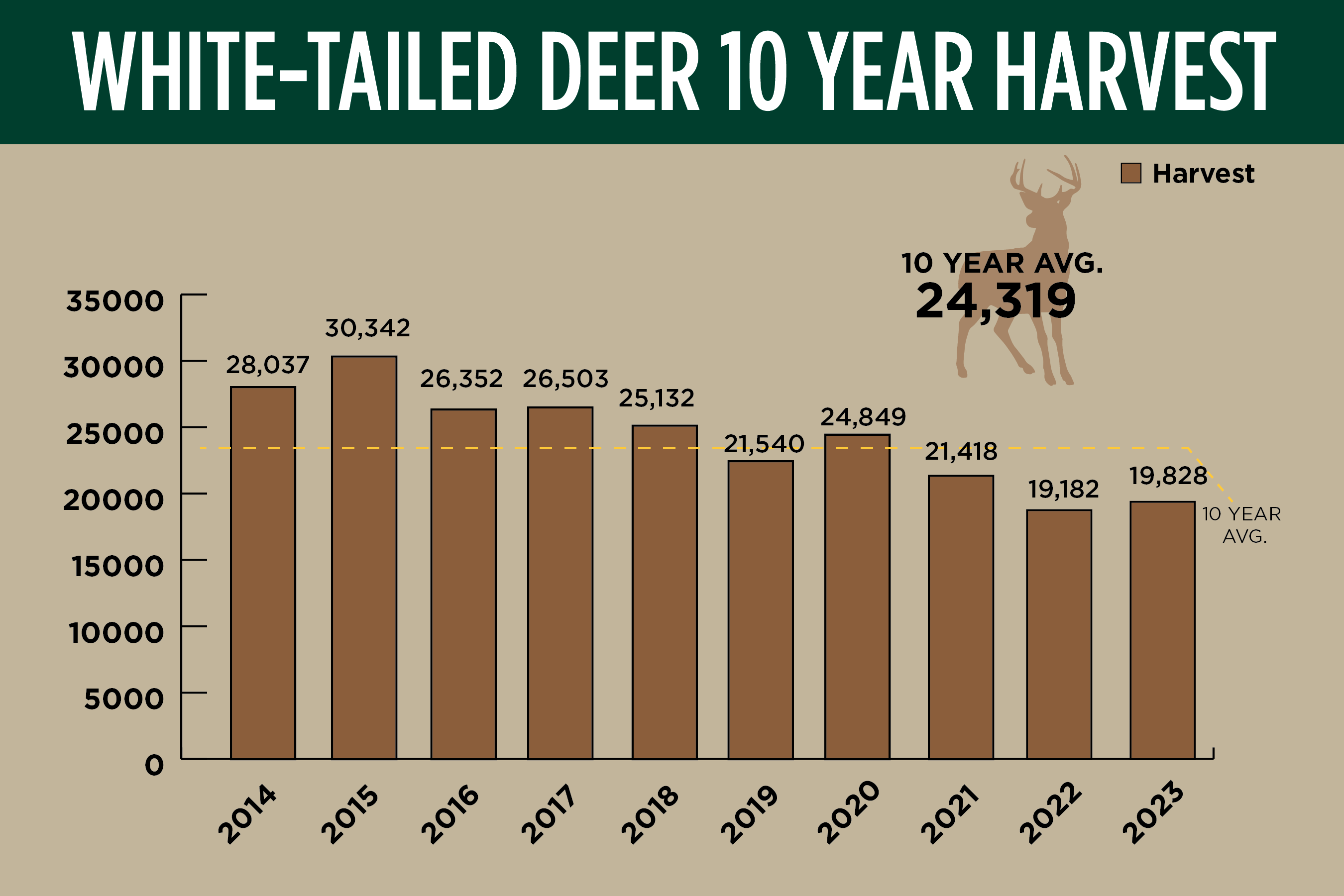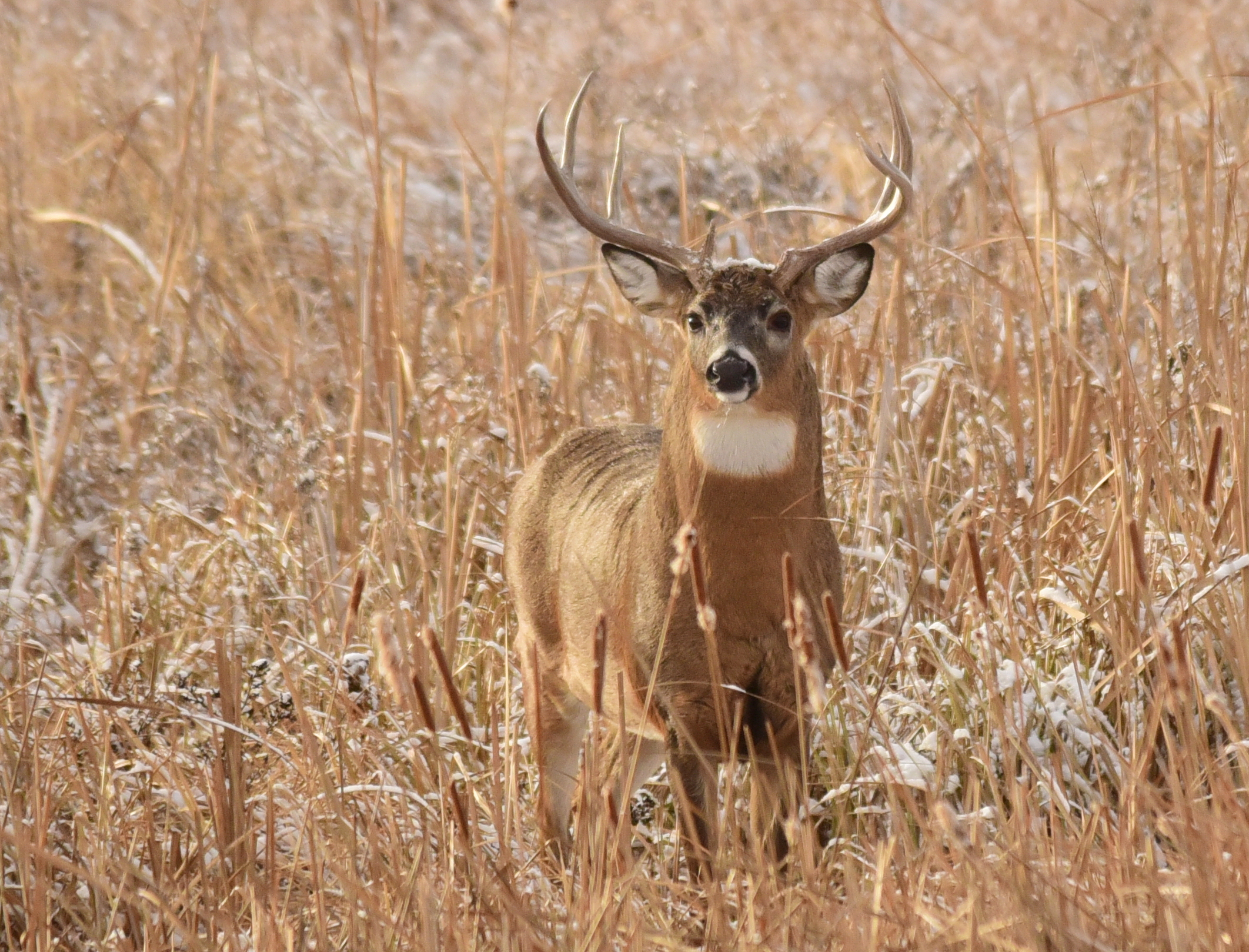But not all deer and elk harvests were down. White-tailed deer harvest had a modest bump—and the first increase in four years—signaling herds may be recovering from a large disease die-off in 2021.
“It was kind of a screwy year,” said Toby Boudreau, Deer and Elk Coordinator. “I think everyone expected the mule deer harvest to drop significantly, but we’re hopeful the mild winter will speed up their recovery, or at minimum, get it off to a good start.”
The elk harvest is a bit of a head-scratcher. Anecdotally, Fish and Game heard reports from experienced elk hunters who were not finding elk in their usual spots during fall, and suspect weather may have been a significant factor.
“We’re fairly confident the dip in the statewide harvest does not reflect a dip in the elk population, but it may take another year to see that,” said Boudreau.
Additionally, Fish and Game used data from radio-collared elk that showed some herds stayed on summer range much longer than in other years. In fact, the lack of movement off their summer ranges actually prevented the Department from conducting one of its planned elk surveys.
Harvest highs and lows
It was a good run. 2023 would have been the tenth year in a row for elk harvest to eclipse the 20,000 mark, but that was not how last fall played out. Elk hunters took home 18,568 elk in 2023, roughly an 11% drop in animals harvested compared to 2022. Roughly 87,864 elk hunters—less than 1% fewer than 2022—took to the mountains in 2023 in search of elk, with 21% of those individuals successfully harvesting an elk.
To no one’s surprise, mule deer hunting saw a big decline in 2023. A total of 74,503 mule deer hunters hunted last fall, with nearly 25% of those successfully packing out a mule deer. Last year’s roughly 22% decrease in total mule deer harvest is also the seventh-consecutive year below the 10-year average. While it may seem impossible to have 70% of the years below the 10-year average, it’s a reflection of an unusually large mule deer harvest in 2015-16 that drove up the 10-year average.
Finally, onto whitetails. White-tailed deer harvest has been at the top of bad news headlines in recent years due to large disease outbreaks; however, in 2023, the number of whitetails harvested showed a bump in the right direction, from 19,182 in 2022 to 19,828 in 2023, which hopefully reflects recovering whitetail herds. Last fall’s whitetail harvest also eclipsed the mule deer harvest for only the sixth time since 1975, when Fish and Game began tracking deer harvest by species.

